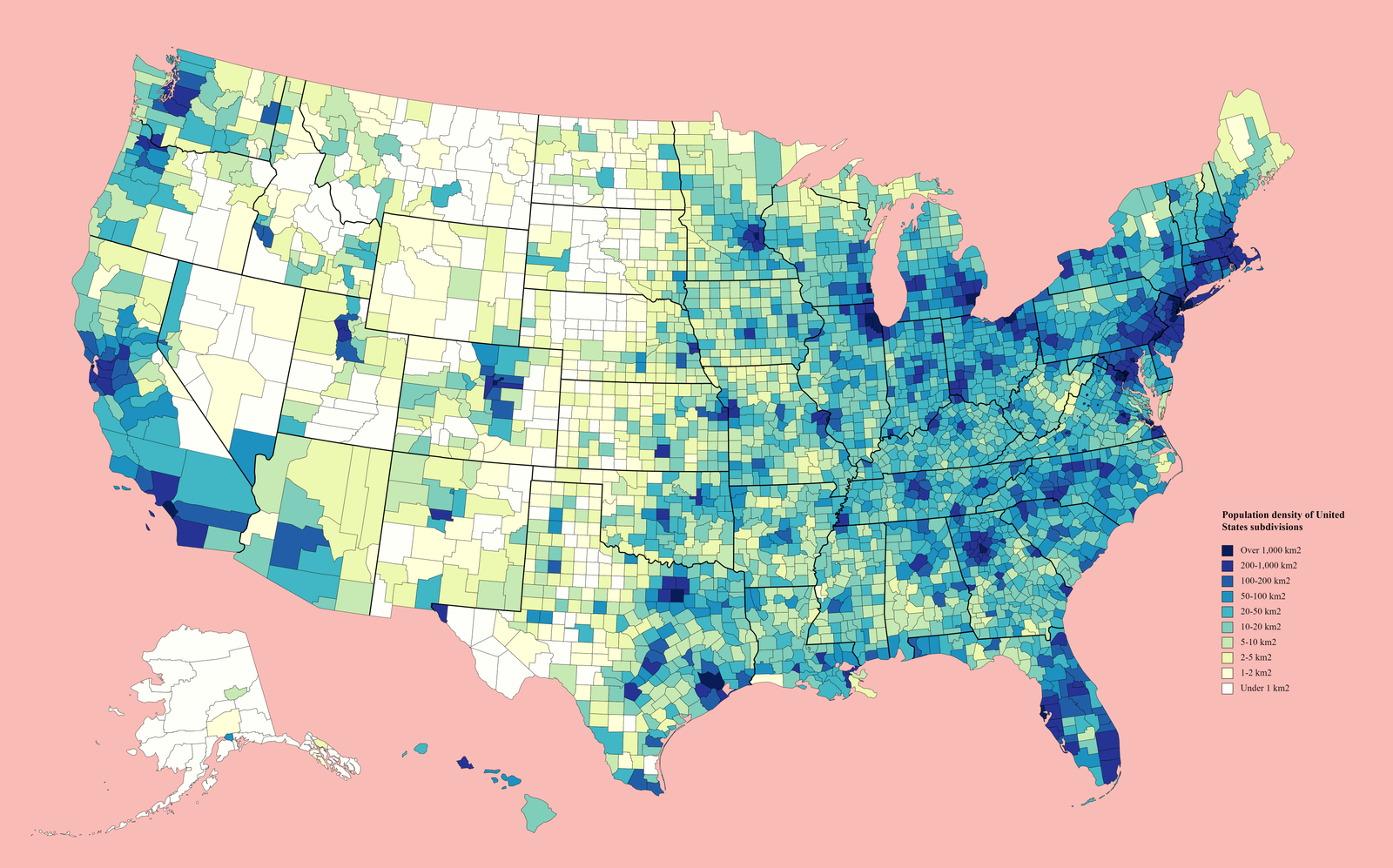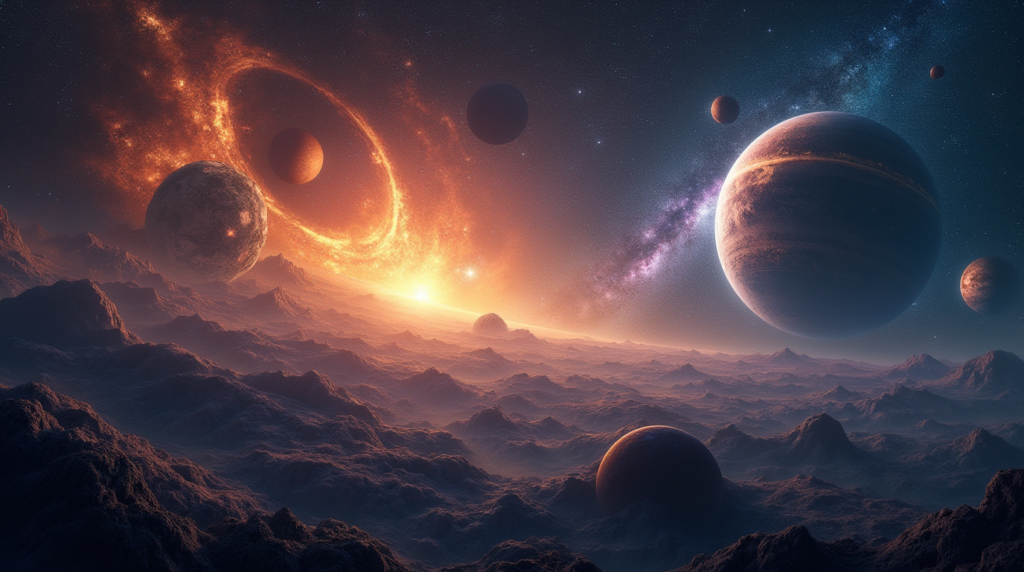Galactic Synergy
On a clear night in rural America, the Milky Way arches overhead while county roads weave below. Countless stars span the sky, and countless communities dot the land. At first glance, a galaxy and a nation appear to have little in common. However, patterns emerge when we compare their diversity, density, and prospects for life. Each star system is like a tiny neighborhood in the cosmos. Each county is a microcosm of culture on Earth. This unexpected analogy creates a synergy between cosmic perspective and community insight. It invites us to explore familiar ground with fresh eyes.
A Universe Within Our Borders
Back on Earth, the United States reveals a cosmos of its own. This nation’s counties span sweltering deserts, snowbound mountains, and everything in between. In over 3,000 counties, you find climates and landscapes as varied as worlds. One county’s horizon might feature bayous dripping with moss, while another’s opens onto endless cornfields or jagged peaks. Human density varies just as starkly. Millions cram into urban counties where city lights drown out the stars. Meanwhile, fewer than a thousand souls reside in some rural expanses. These communities are as isolated as a lone outpost on the fringe of space.
Cultural variety amplifies this richness. Los Angeles County alone is home to more than 220 spoken languages, creating a tapestry of communities. By contrast, a remote Great Plains county may share one predominant heritage and tongue. In one corner of the nation, Navajo elders pass down ancestral stories. In another, festivals celebrate Swedish midsummer or Vietnamese New Year. Yet all these enclaves exist under a shared civic sky. They form a vast mosaic. Common national bonds hold it together, much as gravity binds countless star systems into a single galaxy.
Star Systems and Counties
The architecture of counties often mirrors star systems. Many counties revolve around a central hub, usually a city that serves as the economic star. Smaller towns and villages orbit this hub much like planets around a sun. The hub’s gravitational pull of jobs and services keeps them in that orbit. In some regions, twin cities share a county and balance each other’s influence, resembling a binary star system. Even some counties are so sparsely settled that they lack a true center. In such places, a few ranches or hamlets dot the land like lone planets drifting around a faint star.
Local environments further the analogy. A star’s heat and light dictate whether its planets can host life. Similarly, a county’s terrain and resources shape its cultural ecosystem. A valley with rich soil and flowing water becomes an oasis of farms and festivals. A high desert county, by contrast, forges a culture of resilience under a relentless sun. Coastal counties open outward with ports and markets, like star systems rich with orbiting worlds. Each place’s character arises from conditions that parallel a star’s role in its celestial neighborhood.

The Potential for Galactic Diversity
Modern astronomy hints that our galaxy could host an astonishing variety of worlds. Scientists have confirmed over 5,000 exoplanets so far, and they suspect countless more await discovery. These range from gas giants larger than Jupiter to small rocky spheres orbiting dim red suns. With at least 100 billion stars in the Milky Way, even a tiny fraction harboring life could yield a staggering number of living worlds. Some researchers use formulas to estimate how many civilizations might share the galaxy. Their answers vary wildly. On one end is the sobering possibility that we are alone. On the other hand, the thrilling prospect of many cosmic neighbors evolving under different skies.
What forms might alien life take? Here, nature offers us clues. Life on Earth flourishes even in extreme niches. Microbes thrive in boiling hot springs, while crustaceans scuttle under the crushing pressure of lightless ocean vents. This resilience suggests life elsewhere could survive in conditions we consider hostile or bizarre. Perhaps under the dim glow of a red dwarf, organisms creep slowly, adapting to perpetual twilight. Or on a super-Earth with crushing gravity, creatures might evolve squat, sturdy forms. The possibilities stretch the imagination. Our own planet’s tapestry—from butterflies to blue whales, from Arctic moss to tropical trees—hints at how diverse life can be. It is a reminder that diversity is the norm in nature, not the exception. That principle may hold true on a galactic scale as well, extending even to any intelligent minds that might emerge.
Life Beyond Our World
The quest to find life beyond Earth is both scientific and deeply human. Radio antennas quietly listen for whispers from distant civilizations. Space telescopes probe exoplanets for telltale signs like oxygen or methane that might indicate biology. Rovers dig into Martian soil, and probes peer beneath icy moons for microbes. So far, these efforts have met only silence and barren landscapes. Yet the silence has not dampened our curiosity. Each new planetary discovery renews the hope that somewhere in the dark expanse, life has taken root. The mere possibility inspires us to keep looking and to wonder what that life, if found, might be like.
Confirming we are not alone would be a turning point for our species. It would expand the definition of “neighbor” far beyond anything in human history. First contact with extraterrestrial life—whether intelligent or microbial—would pose challenges and profound questions. How would we communicate? What might we learn or risk in the exchange? Humanity has a checkered history of encounters between cultures on Earth, from fruitful collaborations to tragic misunderstandings.
An encounter with alien life could unite us in awe. But it would also test our capacity for empathy and wisdom on a cosmic scale. Conversely, if we remain seemingly alone, that realization carries its own weight. It would imply that the tapestry of life on Earth is a rare treasure amid silent stars. In either outcome, we gain perspective. We see our own world’s cultures and creatures anew, appreciating their value against the backdrop of the cosmos.
The Path Ahead
The comparison of counties to star systems is more than a thought experiment. It offers a perspective that bridges science and society. Looking up at the stars and then around at our neighborhoods, we recognize patterns that transcend scale. Diversity, whether among people or planets, enriches the systems it inhabits. This understanding urges us to safeguard the variety we have on Earth and remain curious about what lies beyond.
In the coming years, our tools for exploration will only improve. Next-generation telescopes will peer farther and with greater clarity, perhaps catching the first signs of alien life. At the same time, our world will continue to change as cultures interact and evolve. By valuing each community as we value each unique world, we prepare ourselves for whatever the future brings. The path ahead is one of open-minded inquiry. It means learning from our rich cultural galaxy while scanning the actual cosmos for company. Both journeys—outward into space and inward into our collective society—are ultimately about understanding who we are in the vast universe.




